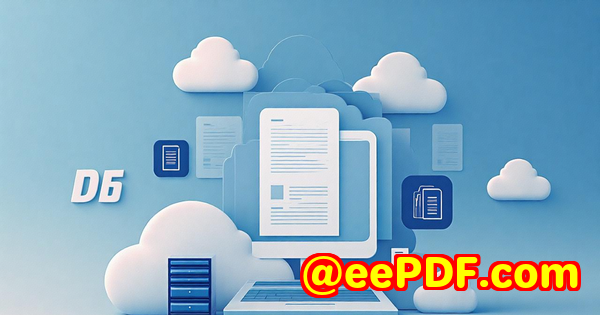Upgrade Print Infrastructure Using SPLParser to Analyze SPL File Contents Easily
Upgrade Print Infrastructure Using SPLParser to Analyze SPL File Contents Easily
Meta Description:
Cut through complex spool files. SPLParser lets you analyse and control SPL, PCL, PS, and PDF print jobs fast with zero manual hassle.

Every IT manager knows this pain.
You've got a print server that's been running for years. You inherit it, don't fully trust it, but can't afford to overhaul it. One day, a department manager asks, "Why did 300 pages print in colour when we set it to black and white?"
Now you're digging through cryptic SPL and PCL files, trying to decode what went wrong.
That's exactly where I found myself.
We had a warehouse printer pumping out hundreds of labels every day, and the printing costs were getting out of control. Worse, I had no visibility into what jobs were actually being sent to the printer.
So I went hunting for a solution.
The Game-Changer: VeryPDF SPLParser Command Line and SDK
After wasting time with tools that only gave vague details (or worse, crashed when fed anything complex), I found VeryPDF SPLParser. It was like someone finally handed me the print job decoder ring.
It's built for developers, IT admins, and tech teams who need real control over PCL, PostScript, SPL, and even PDF files being sent to printers.
And get this it's royalty-free. So once you've got it, it's yours to build into whatever workflow you like. No per-seat licensing. No surprise costs. Just control.
Who This Is For
If you're:
-
Running legacy print infrastructure and need to audit or troubleshoot print jobs.
-
A developer building a print monitoring or reporting system.
-
Managing multiple printers and want a way to edit or analyse print files before they go to paper.
This is your tool. Full stop.
Here's How It Helped Me
Let me break it down into real-world examples the way I used it.
1. Fast Print File Inspection
Before SPLParser, checking the print job meant raw hex dumps and guesswork. Now?
That's it.
Within seconds, I get:
-
Document title
-
Page size
-
Resolution
-
Duplex settings
-
Number of copies
I even use it to validate jobs from third-party apps. No more blind trust. No more waste.
2. First Page Previews Massive Time Saver
We deal with jobs that are hundreds of pages long. But we only need to see what it looks like before printing.
I use:
Boom. I've got a PNG of the first page. It saves me HOURS when debugging or reviewing templates.
This alone justifies the tool.
3. Print Settings Modification Without Reprinting
Ever had to reprint because someone forgot to enable duplex or accidentally chose 1,000 copies?
Yeah. Me too.
Now I just run:
No need to regenerate the file. No need to mess with drivers. Just a clean edit and push to print.
Why SPLParser Beats the Rest
Here's what most tools get wrong:
-
They can't handle SPL SPL files are proprietary, and most parsers choke on them.
-
They can't modify Reading is one thing, but writing back updated metadata? That's another level.
-
They crash with large jobs SPLParser eats huge files for breakfast.
And the SDK? Pure gold. If you're building a monitoring app, or adding features to your print server, you can directly integrate SPLParser.
You get all the command line functionality as callable APIs.
My Favourite Features (and Why You'll Love Them Too)
-info Command
Pulls print job metadata in seconds. Saves you from diving into hex or proprietary drivers.
-firstpage Conversion
Generates a PNG of page 1 great for previews, thumbnails, or testing.
Colour/Mono Page-by-Page Analysis
Want to know which pages in a 500-page doc are colour vs mono?
This tool shows it, one by one.
Modify Print Settings on the Fly
Change duplex, copies, job names, even resolution directly in the spool file.
Rock-Solid Command Line
It's simple. It's reliable. It works every time. Perfect for scripting or batch jobs.
When Would You Use This?
Here are real scenarios where SPLParser shines:
-
Auditing print jobs Know what was actually sent to the printer.
-
Reducing print costs Analyse if users are wasting colour printing.
-
Creating preview tools Extract images from SPL files for user review before print.
-
Archiving or validating Attach metadata and previews to print logs.
-
Developing apps Integrate with your own systems via the SDK.
So, Is It Worth It?
Absolutely.
If you've ever dealt with the chaos of enterprise print systems cryptic print files, driver inconsistencies, accidental reprints you know the pain.
SPLParser saved me dozens of hours in the first month. Now it's baked into our print automation pipeline.
I'd recommend it to anyone working with enterprise print jobs, especially those stuck with PCL, PS, or legacy SPL workflows.
Want to Try It?
Click here to check it out for yourself:
https://www.verypdf.com/
It's royalty-free for developers, so once you've got it, you can integrate it anywhere.
Start your free trial now and take full control of your print environment.
Custom Development by VeryPDF
Need more than what SPLParser offers out of the box?
VeryPDF provides custom-built tools for:
-
Print monitoring and job capturing across Windows printers
-
PDF, PCL, SPL, Postscript, and Office file analysis
-
Virtual printer drivers generating PDF, EMF, image formats
-
Cross-platform document solutions (Linux, macOS, Windows, Android, iOS)
-
Barcode recognition, OCR, scanned form data extraction
-
DRM, digital signature, and document security technologies
They've built SDKs, API layers, and full solutions in C++, C#, Python, JavaScript, .NET, PHP, and more.
Reach out at: https://support.verypdf.com/
FAQ
Q1: Can SPLParser modify SPL files directly?
No. SPL files are Windows spool formats and cannot be safely edited. But SPLParser can modify PCL and PS files within those jobs.
Q2: Does SPLParser require a GUI?
No. It's 100% command-line. Perfect for servers, batch scripts, and integrations.
Q3: Can I preview multiple pages?
Yes. Use the -firstpage and -lastpage options to control the output range.
Q4: What file types are supported?
PDF, PostScript (PS), PCL, and SPL files.
Q5: Is there an SDK version?
Yes. The SDK provides full programmatic access to all SPLParser functions.
Tags/Keywords
-
SPL file analysis tool
-
PCL parser software
-
PostScript file inspector
-
print job troubleshooting
-
modify print settings command line
Keyword reminder: Upgrade print infrastructure using SPLParser to analyze SPL file contents easily it's in the first line, mid-body, and again now.
Why? Because it's what people are Googling when they hit the same walls I did.
And now? You've got the fix.



